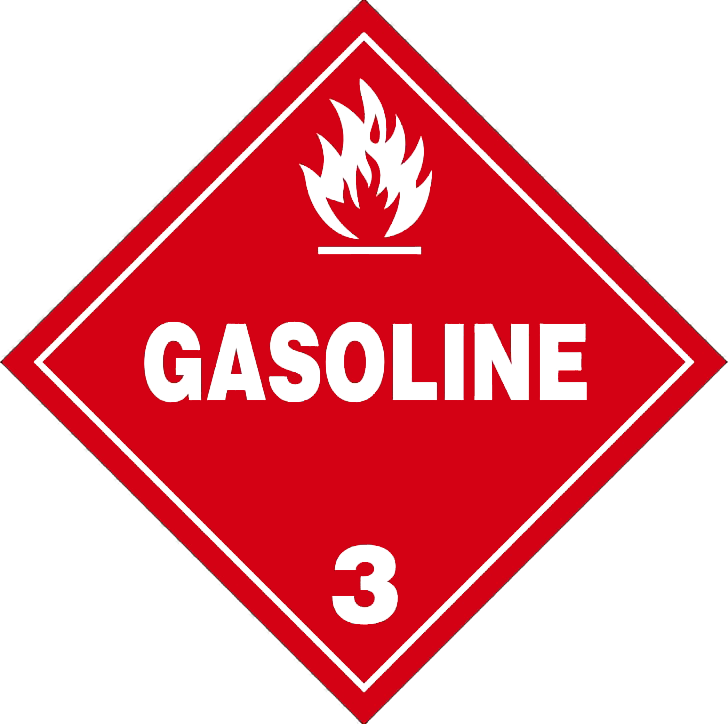Gasoline is the most common flammable liquid manufactured and used. Because virtually everyone uses gasoline it is often assumed that everyone is familiar with its dangerous properties.
Here are some brief but important items to remember when dealing with gasoline:
- Gasoline as a liquid does not burn. It is the vapors that the liquid gives off that burns.
- Vapors usually cannot be seen but frequently travel long distances to a source of ignition. Thus the gasoline can be located a great distance from an actual ignition source.
- Gasoline gives off enough vapor to flash, when exposed to an external ignition source at temperatures as low as -450 F! In other words, hazardous vapors are almost always being released-unless you work in temperatures colder than -450 F.
- Gasoline vapors are heavier than air. Vapors will settle to the ground and flow similar to a liquid. This is why gasoline vapors tend to find their way into drains, sewer lines, basements and other low spots.
- Gasoline must be mixed with air before it can burn. It does not take much gasoline to make an ignitable mixture. If the gas-to-air mixture contains as little as 1.4% gasoline by volume, it can be ignited with explosive force.
- It has been said that the potential energy in a one gallon can of gasoline is equal to numerous sticks of dynamite.
- A gasoline/air mixture can be ignited by a hot surface, a smoldering object such as a cigarette, an open flame, or even a static spark.
- Practice good hygiene after handling gasoline. Wash hands and other areas that may have come in contact with gasoline. Avoid prolonged inhalation of vapors as gasoline contains benzene, a known carcinogen.
What can you do to avoid a gasoline disaster? The following tips are good advice when handling or using gasoline.
- Never use gasoline for anything other than its intended purpose, as a fuel. Never use it as a cleaning solvent!
- Store gasoline in UL approved safety containers.
- Never smoke when anywhere near gasoline. Shut off all equipment before refueling and allow it to cool off first. Inspect all fuel hoses, pipes and pumps frequently. Fix leaks now!
- Gasoline was chosen as a fuel for the same reasons that make it so dangerous. It is easily vaporized, easy to ignite and explodes powerfully when ignited.
***Never let yourself become complacent around this volatile liquid that we use every day***
PDF version is available through the link below.

